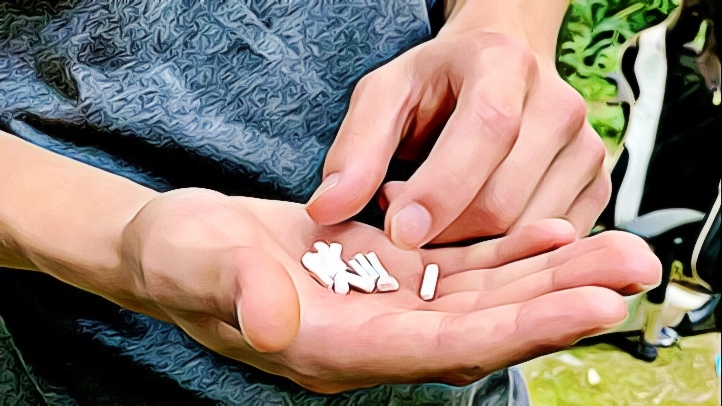Xanax is one of the most commonly prescribed psychiatric medications, making it easily recognizable across the United States. In a fast-paced world where people are constantly exposed to various forms of stressors, the number of anxious individuals is at an all-time high.
With the uptick of anxious-driven patients, drugs like Xanax are booming more than ever since it’s thanks to its unprecedented potency and effectiveness in treating symptoms of anxiety, panic disorder, and depression. In most cases, you can characterize anxiety disorders if you notice the following red flags:
- Unrealistic worry and apprehension;
- Symptoms of restlessness;
- Aches;
- Trembling;
- Shortness of breath;
- Palpitations;
- Clammy sensation;
- Lightheadedness;
- Flushing;
- Easy to startle or jumpy;
- Difficulty focusing;
- Insomnia;
What Happens When You Mix Xanax and Alcohol?
As mentioned above, Xanax produces the same intoxicating effects as you would feel when drunk on alcohol. Seeing as both impact crucial components in the central nervous system, such as your breathing, mixing both can lead to serious repercussions.
For one, it can deal with a double whammy on your breathing and increase the risk of symptoms like excessive drowsiness, poor motor control, memory impairment, dizziness, erratic impulses, trouble breathing, respiratory arrest, and other adverse side-effects that can lead to a fatal overdose.
Alcohol can impair the brain’s ability to support basic functions that keep you alive, compromising the stability of your heart rate, breathing, and even temperature. When you add Xanax to the mix, it can shut down these components and lead to death in the worst-case scenario. To better understand why mixing alcohol and Xanax, it is important to understand the Xanax build and the science behind it.
Formally known as Alprazolam (Xanax XR, Niravam), this prescription medication is a form of anxiolytic treatment under the benzodiazepine drug family. Think of it as a kissing cousin of diazepam (Valium), clonazepam (Klonopin), lorazepam (Ativan), flurazepam (Dalmane), and more.
These types of drugs, commonly referred to as “benzos,” can ease a wide range of anxiety-associated disorders by boosting the neurotransmitter in your brain called the gamma-aminobutyric acid (GABA).
It acts like a communication line between different nerve cells, which means any form of traffic in this brain’s bridge can lead to emotional roadblocks called anxiety. GABA soothes the nerve connections when it senses negative activity, which Xanax tries to reproduce. Moving forward, Xanax binds to these receptors and produces a calming effect and ease anxiety-causing signals.
Mixing alcohol with any other prescription medication can be very dangerous. The mixture of Xanax and alcohol can increase the GABA activity which can cause an over sedation which could lead to loss of consciousness, cardiac issues and even respiratory damage.
An Overview on the Xanax High
The closest description of capturing the disorienting high people feel under Xanax is a mirror-image of being drunk on alcohol. It’s an intoxicating feeling that often leaves you mentally and physically impaired, slowing your reaction time as a strong sense of drowsiness kicks in.
When taken at the ideal dosage as recommended by your doctor, it’s normal to experience a sense of sleepiness and fatigue. However, a growing dependency on Xanax can manifest other adversities to creep up, such as the following side-effects:
- Memory problems;
- Speech problems;
- Constipation;
- Changes in weight;
- Addiction;
- Headache;
- Constipation;
- Dry mouth;
These are symptoms that can fade over time, but it’s crucial to be on the lookout for the graver side-effects like the following:
- Depression;
- Suicidal thoughts;
- Extreme difficulty concentrating;
- Impulsiveness;
- A sudden spike in energy;
- Confusion;
- Tremors;
- Seizures;
- Heart pounding or palpitations;
If you notice the warning signs above, it’s crucial to see medical help immediately. Even if you took it at the recommended dosage, the appearance of these symptoms could be a result of a serious allergic reaction. While it’s a rare response, taking extra caution can make all the difference between a life or death situation.

Understanding Xanax Dosages and Signs of Overdose
The recommended dosage varies depending on your doctor’s orders, though it’s typically given according to the following forms and strengths for adults:
- Tablet – Schedule IV
- 0.25 mg
- 0.5 mg
- 1 mg
- 2 mg
- Tablet, Extended Release – Schedule IV
- 0.5 mg
- 1 mg
- 2 mg
- 3 mg
- Tablet, Orally Disintegrating – Schedule IV
- O.25 mg
- 0.5 mg
- 1 mg
- 2 mg
Overdose can happen when you mix Xanax with other substances such as alcohol, drugs, and medication like opioids. With that in mind, it’s crucial to let your doctors know about any other medications you’re currently taking since they may suggest a safer alternative. Nonetheless, overdosing can lead to symptoms such as:
- Poor coordination;
- Tremors;
- Confusion;
- Rapid heartbeat;
- Slurred speech;
- Uncontrolled muscle movements;
If you notice severe side-effects like hallucinations, seizures, chest pain, difficulty breathing, and more, you need to call for medical help immediately as it can lead to a coma.
What are the Tell-tale Signs of Xanax Withdrawal?
Xanax has a short life-cycle, and the high typically take effect for four hours, which is what makes it easy to abuse. This is also the primary reason Xanax is better for treating infrequent yet severe panic attacks since taking it every day can develop a dependency on the drug.
Relying on the drug can lead to withdrawal, which will manifest two to seven days after your last take and lead to the following:
- Sleep problems or insomnia;
- Restlessness;
- Nervousness;
- Aggression;
- Poor concentration;
- Suicidal thoughts;
- Panic attacks;
- Depression;
- Seizures;
Never stop taking Xanax without informing your doctor first since it can result in dangerous withdrawal symptoms. When it’s time to move on from Xanax, you should expect to follow a program that allows you to ease off the medication without triggering any life-threatening side-effects.
The Bottom Line: Our Basic Guide on the Uses and Effects of Xanax and Alcohol
Treating anxiety disorders is often a winding journey, and the substances that aim to help you along the way can also cause problems with your health if not taken properly. The guide above should help you make the most of this medication without running into further complications, allowing you to move forward with your treatment program without a hitch.
Sources:
https://www.accessdata.fda.gov/drugsatfda_docs/label/2016/018276s052lbl.pdf
















